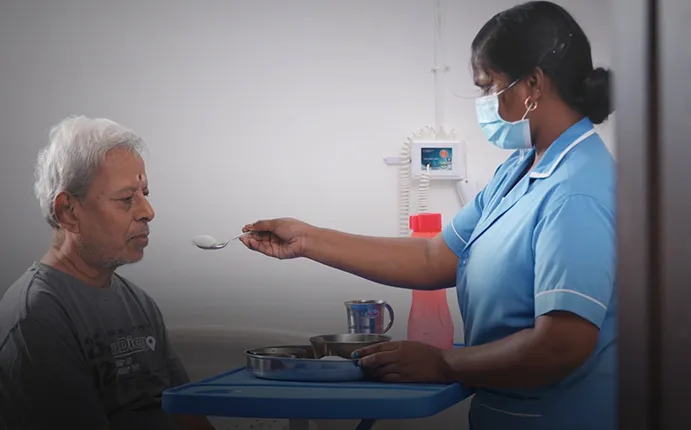Hospital readmissions are a significant concern for patients, families, and healthcare systems alike. They often indicate unresolved health issues and can lead to additional physical, emotional, and financial strain.

Transitional care plays a pivotal role in minimizing readmissions by ensuring patients receive comprehensive support as they transition from hospital to home or another care setting. In 2025, advancements in healthcare practices and technology have made transitional care even more effective in reducing readmission rates.
The Problem of Hospital Readmissions
Hospital readmissions occur when a patient is discharged but returns to the hospital within a short period, often due to:
- Inadequate follow-up care.
- Mismanaged medications.
- Unaddressed complications or relapses.
- Poor communication between healthcare providers and patients.
Readmissions can be particularly common among individuals with chronic conditions, post-surgical patients, and the elderly.
How Transitional Care Reduces Readmissions
Transitional care provides a structured approach to post-hospitalization recovery, addressing the root causes of readmissions.
- Comprehensive Discharge Planning
- Transitional care begins before discharge, with a clear and detailed recovery plan.
- Patients and families receive instructions on medication, lifestyle adjustments, and follow-up appointments.
- Providers ensure patients understand their care plan to avoid confusion.
- Seamless Communication
- Effective communication between hospitals, primary care providers, specialists, and transitional care teams ensures continuity of care.
- Digital platforms in 2025 allow real-time updates, shared records, and streamlined coordination.
- Early Detection of Complications
- Remote monitoring devices track vital signs and symptoms, enabling early identification of potential issues.
- Providers can intervene promptly to prevent conditions from escalating.
- Medication Reconciliation and Management
- Transitional care teams review and manage medications to avoid errors, duplications, or adverse reactions.
- Patients and caregivers receive education on proper medication use.
- Patient and Caregiver Education
- Empowering patients and their families with knowledge about their condition reduces uncertainty.
- Education includes recognizing warning signs, when to seek help, and how to follow recovery protocols.
- Follow-Up and Continued Support
- Regular check-ins, either in person or through telehealth, help monitor recovery progress.
- Scheduled follow-up appointments ensure ongoing care and address emerging concerns.
Technological Advances Supporting Transitional Care in 2025
Modern technology has revolutionized transitional care, making it more efficient and impactful in reducing readmissions:
- Wearable Devices: Monitor vital signs, such as heart rate, oxygen levels, and blood pressure, and alert providers to abnormalities.
- Telemedicine: Enables virtual consultations, saving time and providing immediate access to healthcare professionals.
- AI-Driven Insights: Predictive analytics identify patients at high risk for readmission and recommend proactive interventions.
- Mobile Apps: Help patients track medications, appointments, and recovery milestones.
Success Stories: Impact of Transitional Care
- Cardiac Patients: A hospital implemented a transitional care program for heart failure patients using remote monitoring and telehealth check-ins. Readmissions decreased by 25% as complications were detected and managed early.
- Post-Surgical Recovery: Patients recovering from joint replacements received home-based physical therapy and follow-up calls from care coordinators. Their readmission rates dropped significantly due to better adherence to recovery protocols.
Challenges in Reducing Readmissions
Despite its effectiveness, transitional care faces obstacles such as:
- Patient Non-Adherence: Ensuring patients follow care plans can be challenging. Providers in 2025 address this through enhanced education and personalized support.
- Resource Limitations: Rural areas or underfunded healthcare systems may lack access to advanced transitional care services. Telemedicine is helping bridge this gap.
- Caregiver Fatigue: Family members involved in caregiving can experience burnout. Support programs and respite care are increasingly available to alleviate this burden.
Benefits for Healthcare Systems
By reducing readmissions, transitional care also benefits healthcare providers and systems:
- Lower costs associated with avoidable hospital stays.
- Improved patient satisfaction and trust in the healthcare system.
- Better resource allocation for acute care needs.
Steps Patients Can Take to Avoid Readmissions
Patients play a crucial role in their recovery. Steps to minimize the risk of readmission include:
- Attending all follow-up appointments.
- Following medication schedules and dietary recommendations.
- Using technology like apps or wearable devices to stay on top of recovery milestones.
- Communicating concerns or unusual symptoms promptly to healthcare providers.
Conclusion
Transitional care in Chennai is an essential component of modern healthcare, particularly in reducing hospital readmissions. By addressing gaps in care, providing personalized support, and leveraging technology, transitional care ensures smoother recoveries and better outcomes for patients in 2025. As healthcare continues to evolve, the role of transitional care in fostering long-term health and reducing readmissions will remain indispensable.